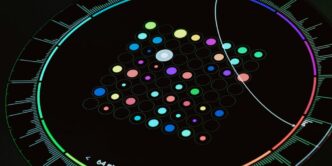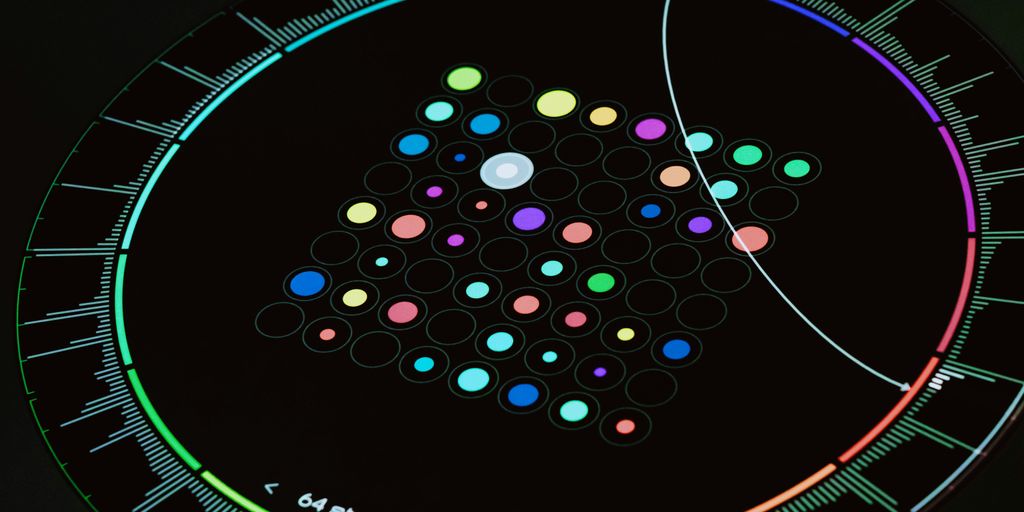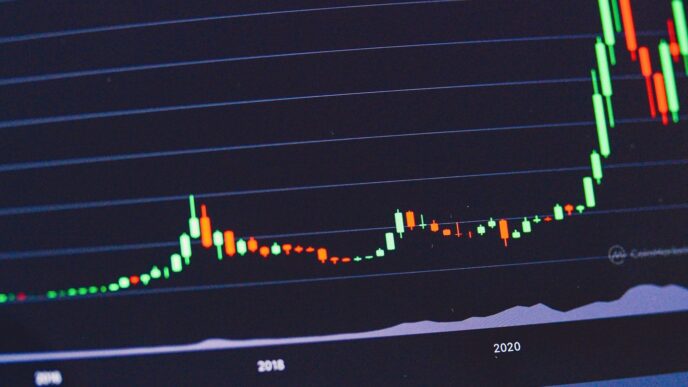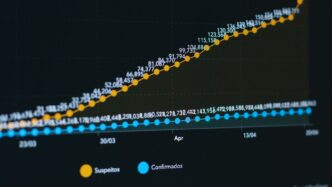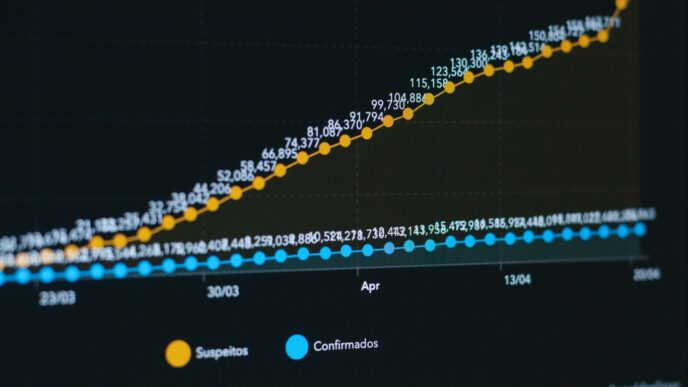Ever wonder what’s going to happen way, way, way down the line in the universe? We’re talking about a seriously long time here, like 1 nonillion years from now. That’s a 1 followed by 30 zeros! It’s pretty wild to think about, but scientists have some ideas about what the cosmos might look like, or not look like, when we get to that point. So, if you’ve ever asked yourself what will happen in 1000000000000000000000000000000 years, buckle up, because things get really strange.
Key Takeaways
- Stars like our Sun will eventually cool down and become black dwarfs, while planets might just drift off into the vast emptiness of space.
- If protons aren’t stable forever, which some theories suggest, then all matter, including everything we know, will slowly break apart over immense timescales.
- Black holes are expected to be the last giant objects left in the universe, but even they will slowly shrink and disappear through a process called Hawking radiation.
- The universe is headed towards a state of extreme cold and emptiness, where all energy will be spread out so thinly that nothing can happen anymore.
- In the super distant future, tiny quantum effects could become surprisingly important, leading to bizarre possibilities like random particles forming ‘Boltzmann brains’ or even the universe starting over.
The Twilight of Stellar Evolution
Okay, so picture this: the universe isn’t just going to poof disappear. It’s more like a slow fade-out. We’re talking about the era where stars stop being born. The gas clouds that fuel them? Gone. Used up. It’s like running out of wood for the fireplace – eventually, the fire dies down. Star formation will cease.
The Emergence of Black Dwarfs
So, what happens to all those stars that are already burning? Well, they eventually run out of fuel too. Smaller stars, like red dwarfs, will burn for an insanely long time – trillions of years. But eventually, they’ll cool down and become black dwarfs. These are basically stellar embers, cold and dark. The Sun itself will eventually become a black dwarf. It’s kinda sad, but also… inevitable. By 10<sup>15</sup> years from now, the black dwarf that was once the Sun will have cooled to 5 K (−268.15 °C; −450.67 °F).
Planetary Dispersal into the Void
What about planets? They’re not safe either. Over vast stretches of time, gravitational interactions with passing stars will kick planets out of their orbits. It’s like a cosmic game of marbles, where planets are the marbles and stars are the giant fingers flicking them away. Eventually, most planets will be ejected into the void, wandering alone through the darkness. By 10<sup>15</sup> years, stellar close encounters detach all planets in star systems from their orbits.
The Slow Demise of Neutron Stars
Then you have the really weird stuff: neutron stars. These are the super-dense remnants of massive stars that went supernova. They’re incredibly small but pack a huge punch. They’ll stick around for a while, but even they aren’t immortal. If protons do not decay, stellar-mass objects will disappear more slowly. Over unimaginable timescales, they’ll slowly lose energy and eventually fade away too. It’s a long, slow goodbye to the era of stars.
The Era of Proton Decay
Okay, so things are starting to get really weird now. We’re talking about a time so far in the future that the very building blocks of matter, protons, might not even be around anymore. It’s a mind-bender, for sure.
The Gradual Disintegration of Matter
If protons do decay, and that’s a big ‘if’, then everything changes. The universe as we know it starts to unravel, atom by atom. We’re not talking about a quick explosion or anything dramatic. It’s a slow, agonizing process where protons, which make up the nuclei of atoms, just…poof. Gone. This has huge implications for everything made of matter.
Unraveling of Atomic Structures
Imagine a house where the bricks are slowly turning to dust. That’s kind of what’s happening to everything. As protons decay, atoms become unstable. They can’t hold themselves together anymore. Heavier elements start breaking down into lighter ones, eventually leading to just fundamental particles. Planets, stars, everything solid starts to dissolve. It’s like the ultimate cosmic sandcastle being washed away by the tide. It’s worth noting that scientists have achieved unlimited speeds on a microchip, but that won’t help us outrun proton decay.
The End of Nucleonic Stability
So, how long are we talking about? Well, estimates vary wildly. Some theories suggest proton decay could happen within 10^32 to 10^42 years. That’s a 1 with 32 to 42 zeros after it. Other models push that number way, way out. Recent research shows that the proton lifetime exceeds 10^36 years. If protons don’t decay, then things just take longer to fall apart, but they still eventually will. Either way, the era of nucleonic stability is finite. Here’s a simplified look at the potential timeline:
- Scenario 1: Proton Decay Occurs: Matter gradually disintegrates over an incredibly long period.
- Scenario 2: No Proton Decay: Objects still disappear, but at a much slower rate.
- Outcome: Eventually, all matter reaches thermal equilibrium.
Black Holes as Cosmic Dominators
Okay, so after all the stars have fizzled out and protons might be decaying, what’s left? Black holes. Lots and lots of black holes. For a seriously long time, they’re basically the biggest things around, ruling the cosmic roost. It’s kind of a bleak picture, but also fascinating to think about.
The Final Feast of Stellar Remnants
Imagine a universe where the only snacks left are the remnants of dead stars. That’s the black hole’s diet for eons. They’ll slowly gobble up any stray matter floating around – the last bits of planets, rogue asteroids, maybe even the occasional dead star that gets too close. It’s a slow, methodical process, but they’re patient eaters. They have all the time in the world, or rather, the universe. This era is all about black hole dominance.
Evaporation Through Hawking Radiation
Here’s the mind-bending part: black holes aren’t actually eternal. Thanks to something called Hawking radiation, they very, very slowly evaporate. It’s a quantum effect where they emit particles and lose mass over an unimaginable timescale. The smaller the black hole, the faster it evaporates. A black hole the size of our sun would take something like 10^64 years to disappear. Bigger ones? Way, way longer. We’re talking about numbers that are hard to even wrap your head around. Check out the estimated evaporation times:
| Black Hole Mass | Approximate Evaporation Time |
|---|---|
| 1 Solar Mass | 2 x 10^64 years |
| 100 Billion Solar Mass | 2 x 10^93 years |
| 100 Trillion Solar Mass | 10^106 – 2.1 x 10^109 years |
The Long Silence of Collapsed Stars
Eventually, even the biggest black holes will fade away. They’ll go out with a tiny burst of energy, a final whisper in the vast emptiness of space. After that, there’s nothing left but the photons, electrons, positrons, and neutrinos. The universe enters a new era, the Dark Era, where the only activity is the occasional quantum fluctuation. It’s a long, long way off, but it’s the eventual fate of these cosmic giants. It’s the end of the Black Hole Era and the beginning of something even stranger.
Approaching Thermal Equilibrium

Okay, so picture this: the universe, like, really spread out. Everything’s winding down, stars are gone, black holes are doing their thing, and it’s all heading towards one big, boring equilibrium. It’s not exactly a party.
The Universe’s Ultimate Heat Death
Eventually, the universe will reach a state of maximum entropy, often referred to as heat death. This means that all temperature gradients will disappear, and no further work can be extracted from the system. It’s like when you leave a cup of coffee out for too long – it eventually reaches room temperature, and there’s no way to make it hotter or colder without adding energy. The Andromeda Galaxy will have long collided with the Milky Way, and even those merged remnants will be isolated.
Dissipation of All Remaining Energy
What’s left to dissipate? Well, even the tiniest amounts of energy will eventually spread out. We’re talking about the energy from the slowest processes imaginable. The cosmic background radiation, already incredibly cold at around 2.7 Kelvin today, will continue to cool, eventually reaching temperatures near absolute zero. Some estimate that the cosmic background radiation cools to a floor temperature of 10<sup>−30</sup> K after 1.4 trillion years, due to horizon radiation.
A Homogeneous Cosmic Void
In the far, far future, the universe will be a vast, empty space with almost nothing happening. There will be less than one particle per cosmological horizon volume. No stars, no galaxies, just a few photons drifting around in an ever-expanding void. It’s a pretty bleak picture, but hey, at least everything will be the same temperature! It’s the ultimate in cosmic uniformity. The future of gaming through the lens of spatial computing will be a distant memory.
The Deep Future of Quantum Phenomena

Okay, so we’ve talked about stars dying, protons decaying, and black holes doing their thing. But what about the really, really deep future? Like, when everything else is basically gone? That’s when quantum stuff starts to get really weird, and honestly, a little scary.
The Enigma of Boltzmann Brains
Imagine this: in a universe approaching maximum entropy, random fluctuations can, theoretically, create anything. And I mean anything. That includes fully formed brains, complete with memories and consciousness, popping into existence out of nowhere. These are called Boltzmann Brains, and the problem is, they’d vastly outnumber "real" brains that evolved through normal processes. Why would the universe bother with billions of years of evolution when it can just spontaneously generate a brain? It’s a philosophical nightmare that makes you question everything. Some physicists think the Higgs field supports another vacuum state that could prevent this.
Speculations on False Vacuum Decay
Speaking of scary, there’s this idea called false vacuum decay. Basically, the universe might be in a "false vacuum" state, meaning it seems stable, but it’s actually just a matter of time before it tunnels to a lower energy state. If that happens, a bubble of true vacuum would expand at the speed of light, rewriting the laws of physics as it goes. Everything we know would be instantly destroyed. Cheerful, right? It’s like the universe has a self-destruct button, and we don’t know where it is. The possibility of Higgs field decay is a real concern.
The Potential for New Universes
But hey, it’s not all doom and gloom! Some theories suggest that quantum tunneling or fluctuations could lead to the birth of new universes. Imagine a tiny bubble of space-time pinching off from our universe and expanding into its own reality. It’s a mind-boggling concept, but it offers a glimmer of hope that even in the face of ultimate heat death, there’s still potential for something new to emerge. It’s like the ultimate cosmic recycling program. The universe could avoid eternal heat death through random quantum tunneling and quantum fluctuations.
Cycles of Cosmic Recurrence
Okay, so we’ve talked about the universe winding down, right? Black dwarfs, proton decay, black holes slowly evaporating… it all sounds pretty final. But what if it’s not really the end? What if the universe, in some crazy way, starts all over again? That’s where these ideas of cosmic recurrence come in. It’s mind-bending stuff, but let’s try to wrap our heads around it.
Poincaré’s Return and Infinite Loops
Ever heard of Poincaré recurrence? Basically, in a closed system, things will eventually return to a state very close to their original condition. It’s like shuffling a deck of cards – eventually, you might get the same order again (though it would take a very long time). Applied to the universe, this suggests that after an unimaginable amount of time, the cosmos could, in theory, return to a state similar to its beginning. Of course, the timescales are so vast that it’s almost impossible to grasp. We’re talking about numbers with so many zeros they make your calculator explode. It’s a wild thought, though, isn’t it?
The Repetition of Quantum States
Quantum mechanics adds another layer of weirdness. At the quantum level, there are only so many possible states a particle can be in. Given enough time, every particle in the universe could, theoretically, cycle through all possible states and eventually return to its initial configuration. This is similar to Poincaré recurrence, but it’s happening at the most fundamental level of reality. It’s like the universe is a giant computer, running through every possible combination of 1s and 0s, and eventually looping back to the start. Here’s a simplified view:
- Quantum State A
- Quantum State B
- Quantum State C
- …and so on, until it loops back to A.
It’s important to remember that this is all theoretical, and the timescales involved are far beyond anything we can currently comprehend. But it does open up the possibility that the universe isn’t just a one-way trip to heat death, but a cyclical process of birth, death, and rebirth. The oscillatory universe hypothesis offers a fascinating alternative to the standard Big Bang model.
Beyond the Limits of Comprehension
Honestly, trying to understand these concepts is like trying to hold the ocean in a teacup. Our brains just aren’t wired to deal with timescales that are so far beyond human experience. We can create models and equations, but the reality is likely far more complex and strange than anything we can imagine. The idea of cosmic recurrence challenges our fundamental assumptions about time, causality, and the nature of reality itself. It forces us to confront the possibility that the universe is not just vast, but also infinitely repetitive, playing out the same patterns over and over again across eons of time. It’s a humbling and awe-inspiring thought, even if we can’t fully grasp it.
The Long Goodbye
Okay, so we’ve taken quite a journey, haven’t we? Thinking about a nonillion years, and even further, really puts things into perspective. It’s kind of wild to imagine a universe where stars are long gone, and even black holes eventually disappear. Everything just stretches out into this incredibly long, quiet fade. It might seem a bit much to grasp, but seeing this whole timeline, from bright beginnings to a distant, dark end, just shows how truly vast space and time are. It makes you think about our little moment in all of it.
Frequently Asked Questions
What happens to stars and planets in the very distant future?
Over incredibly long stretches of time, stars like our Sun will eventually cool down and become “black dwarfs”—cold, dark leftovers that don’t shine anymore. Any planets orbiting these dead stars might get knocked out of their paths and drift alone through the vast emptiness of space. Even neutron stars, which are super dense, will slowly lose their energy and fade away.
Will everything in the universe eventually fall apart?
Yes, it’s believed that in the extremely distant future, even the tiny particles that make up everything around us, called protons, might break down. This process, known as proton decay, would mean that all ordinary matter, from rocks to dust clouds, would slowly disintegrate into lighter particles and radiation. The universe would become a very different place without stable atoms.
What role do black holes play in the universe’s ultimate end?
Black holes are like the universe’s last giants. They will slowly “eat” any remaining matter that comes too close. But even these powerful objects aren’t forever. Over unbelievably long periods, black holes are expected to slowly shrink and disappear by giving off tiny bits of energy, a process called Hawking radiation. Eventually, they too will vanish, leaving behind almost nothing.
What does “heat death” mean for the universe?
The “heat death” is a theory about the universe’s final state. It means that all energy will spread out evenly, like sugar dissolving completely in water. There will be no hot spots or cold spots, no differences in energy anywhere. When everything is the same temperature and spread out, nothing can happen, no work can be done, and the universe will become a cold, dark, and quiet void.
Are there any really strange or unexpected things that could happen in the super far future?
Yes, scientists have some wild ideas! One is the concept of “Boltzmann brains,” which are tiny, random brains that might briefly pop into existence in the empty universe due to pure chance. Another idea is “false vacuum decay,” where the universe’s basic rules could suddenly change, possibly leading to a completely different kind of reality or even destroying the current one.
Could the universe ever repeat itself or go through cycles?
It’s a mind-bending thought, but some theories suggest that over truly unimaginable timescales, the universe might, by sheer chance, return to a state it was in before. This idea, related to something called Poincaré recurrence, means that given enough time, every possible arrangement of particles could eventually happen again. It’s not a true “restart” but more like a statistical echo of past states.

